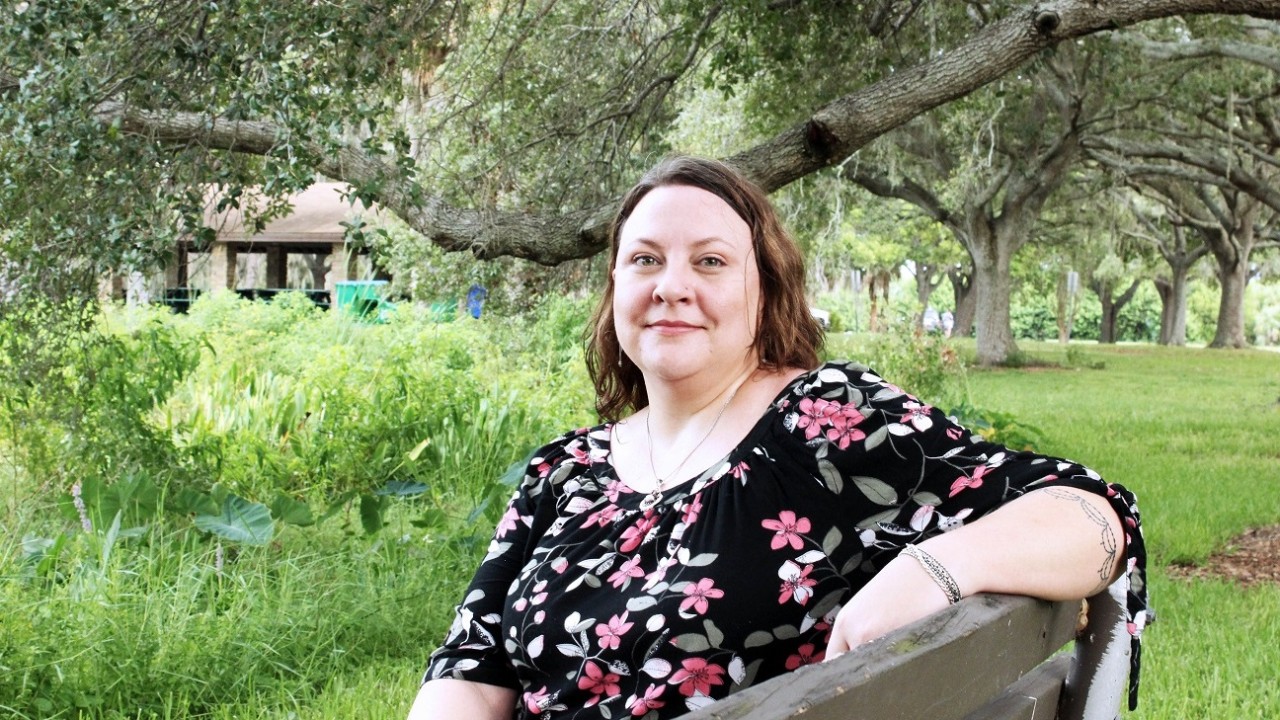
You are leaving Lundbeck.com/US
You have chosen to visit another Lundbeck website or a third-party website, which is provided as a service to you. Lundbeck does not control content on third-party websites and cannot make representations concerning the accuracy of information on every website you visit. Lundbeck is not responsible for the privacy policy of any third-party website. We encourage you to read the privacy policy of every website you visit.

Colleen Henderson Heywood
Adjusting to a new reality
Colleen was 42 years old and living life at full speed when she noticed that her toes started curling. When she was diagnosed with Parkinson’s disease a few months later, she decided to change her life completely.
Coleen Henderson Heywood
United Kingdom
42 years old.
Employment
Speaker at Parkinson's conferences and sits on various committees for the Parkinson's Disease Society of the UK.
Diagnosis
Diagnosed with Parkinson's Disease at 42 years old.
On a rainy afternoon, Colleen Henderson-Heywood found herself sitting in her car outside a specialist’s office. After nine months of consultation with specialists, she had just received the news that she had Parkinson’s disease. “I decided that the disease would be allowed to rob me of just one day,” Colleen explains.
The first sign that something was not quite right with Colleen’s body was when the toes of her right foot started curling. “I spent three weeks in Mexico wearing flip-flops and thought the toes would straighten themselves out. But I couldn’t keep my shoes on my right foot – the foot would shoot the shoe off at some distance,” she says. In fact, Colleen chose to ignore her right foot.
Four or five months later, she went to Barcelona and found herself standing across the road from a café she wanted to go to.“I set off towards it but didn’t move. I was stuck. I kept sending the signal to my body to walk to the café, but I couldn’t get my right leg to move,” Colleen recalls. “After this, I finally went to see my doctor. He said he had no idea what was wrong with me, but would start a process of elimination.” Colleen had among other examinations a DAT scan1, which is used to diagnose Parkinson’s disease
“The specialist rang and asked me to come and see him. He asked me to sit down. I said, ‘No, I just want to know now.’ ‘You have Parkinson’s disease,’ he said. I replied: ‘Thank goodness for that! At least I now know and can get on with my life and you can do something for me.’” Colleen’s initial optimism did, however, suffer a blow: “I mistakenly thought that there would be a treatment that solved everything; that I would have medication that would allow me to walk normally. Unfortunately, this wasn’t the case.”
Colleen describes her symptoms: “I woke up at four o’clock this morning and was very slow to get going. I have to roll out of bed because my body doesn’t move too well. And as soon as I get out of my environment it becomes a bit of a challenge. Sometimes I can’t walk because my brain doesn’t tell my body to walk. But I can trick it by walking backwards or sideways and then get it back into action.”
“I don’t consciously think about my illness. It is by my side, not in front of me. It is only when I take my medication that I am reminded that I am a patient."
Coleen Henderson Heywood
Colleen has a mission to try and show people with Parkinson’s disease that they should not feel that they have lost their lives. She puts her mission into practice by speaking as a patient at Parkinson’s conferences and sitting on various advisory committees for the Parkinson’s Disease Society of the United Kingdom
